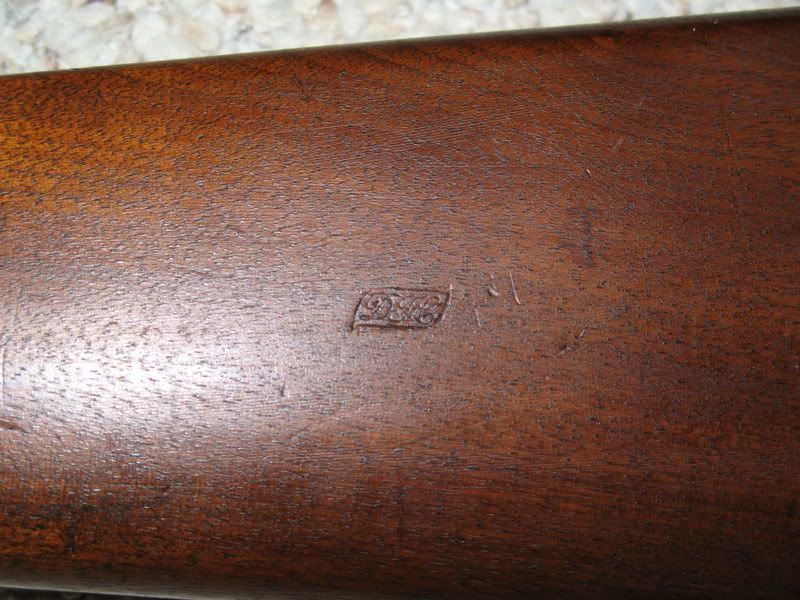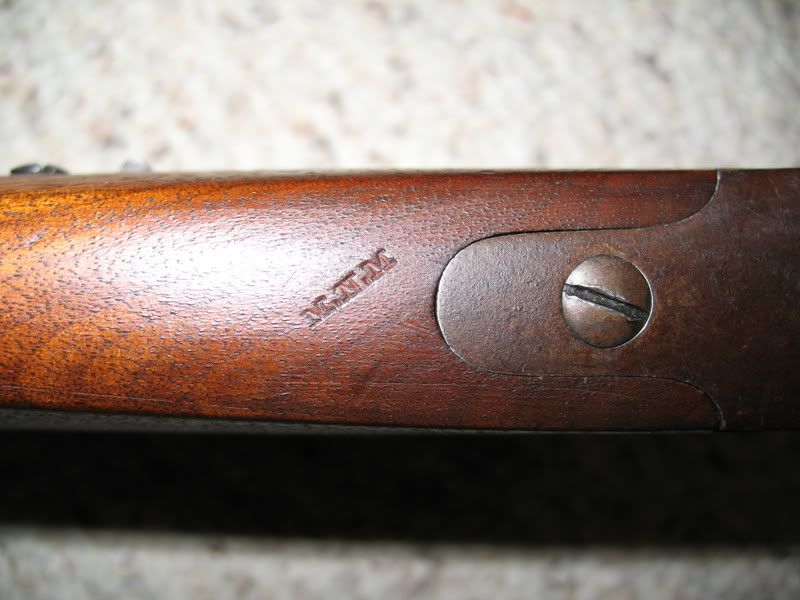In order to participate in the GunBroker Member forums, you must be logged in with your GunBroker.com account. Click the sign-in button at the top right of the forums page to get connected.
Sharps Cartouche
I picked up a nice Model 1859 Sharps last week, and in addition to the regular inspectors cartouches by the saddle ring bar, it has one on the left side of the stock, about midway, and another on the very top, by the buttplate. Anyone know what these extra markings were for ?






Comments
They look way to "sharp", to me, to be authentic though. 140+ year old military firearms that I have owned and handled in the past have had various cartouches and other markings on the wood worn to the point of being indecipherable.
I appreciate the concern, but they are commensurate with the rest of the carbine. The wood is in excellent condition, and fit and finish all appear proper. Not to say they couldn't have been faked. Here are some more pics of the rest of it, and let me know if you or Spider still have doubts. Thanks in advance !
I never had any doubt. I could see that the wood was in excellent condition and I believe the stampings to be original.
Sorry, I worded that poorly. I didn't intend to imply that you had doubts, just that you and Rufe-Snow were the only ones who responded, so I addressed you both in the last post.
I have a lot of respect for the replies that both of you, and others (Nmyers, Bert H etc.) have posted, both to my posts, and others in the past.
I know a lot of folks get upset if someone questions the authenticity of one of their pieces, but I would have been glad to have either of you looking over my shoulder before I bought something in my early collecting years. It would have saved a lot of $$$ in the long run !
The original 19th Century military rifles and carbines that I have owned in the past, that had been issued and used had dark almost oxidized furniture from years of handling and storage.
The only one with wood in comparable condition to your Sharps, that I owned. Was a Model 1895 Chilean Mauser, that had never been issued. These were imported from Chilean arsenals, and sold as surplus in the 60's. The metal on the receiver and barrel was in the same condition as the stock. This isn't the case with your Sharps carbine.
WACA Historian & Life Member
And a link to view all the photos I have of it.
http://s14.photobucket.com/albums/a336/DcinFfxVa/US Model 1859 Sharps/
And military issue? Photo shows new screw heads on the patch box. They should be in-the-white.
If you haven't purchased yet, can you get an inspection period? Wood is "out of agreement" with the metal vis-a-vis wear. Look at the wrist. The wood should be worn. That's the place everybody holds a rifle. 150 years of holding a rifle. Tough call, old man. Joe
dcinffxva says: "I'm wondering how much the flash is impacting how this discussion is going, because it definitely makes the wood look much brighter than it actually is."
This may well be the case.
It appears that "edge lighting" (low and to the left) was used in the photos. This would cause the imprinting to stand out in greater relief and sharper contrast than would be the case when "eyeballing" it in normal (ambient) light from straight above.
I can't comment on the authenticity of this Sharps, since I have no expertise in the area, but as a retired professional photographer (50+ years in the business), I think I can clear up the questions on the depth & clarity of the cartouches.
dcinffxva says: "I'm wondering how much the flash is impacting how this discussion is going, because it definitely makes the wood look much brighter than it actually is."
This may well be the case.
It appears that "edge lighting" (low and to the left) was used in the photos. This would cause the imprinting to stand out in greater relief and sharper contrast than would be the case when "eyeballing" it in normal (ambient) light from straight above.
Although I have never been a professional photographer, I have taken lots of pictures of guns over the years. I agree with Xracers assessment, that the correct lighting is the most important factor in taking accurate, quality photos, i.e. it's very easy to make mistakes trying to appraise firearms without flat, open shade type lighting.
Because of this I would urge dciniffxva to seek out either a very knowledgeable/honest collector or dealer, for a hands-on inspection of the Sharps.